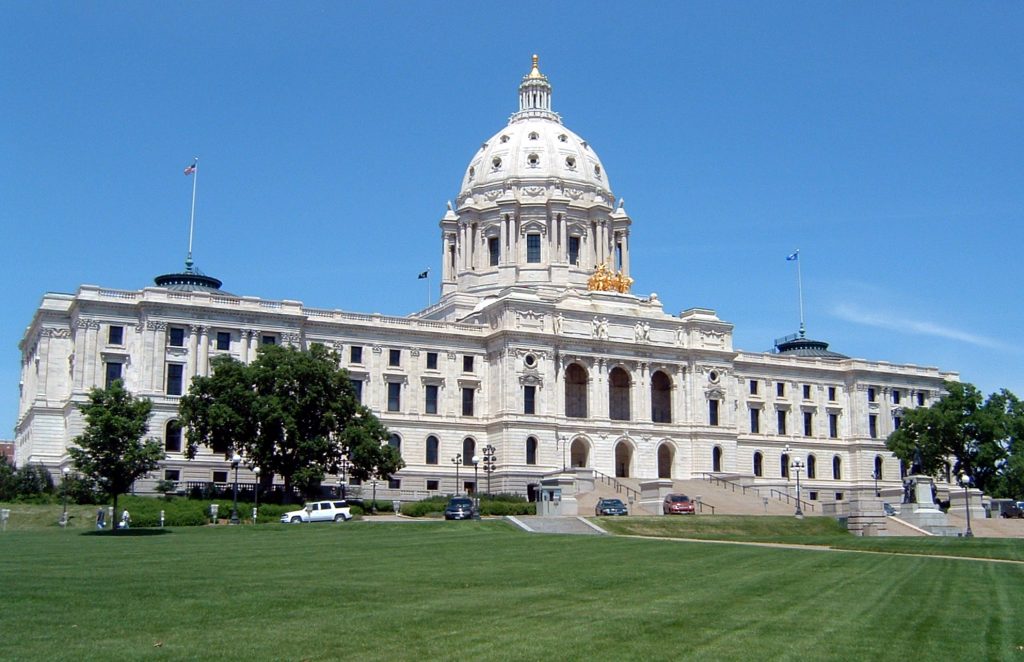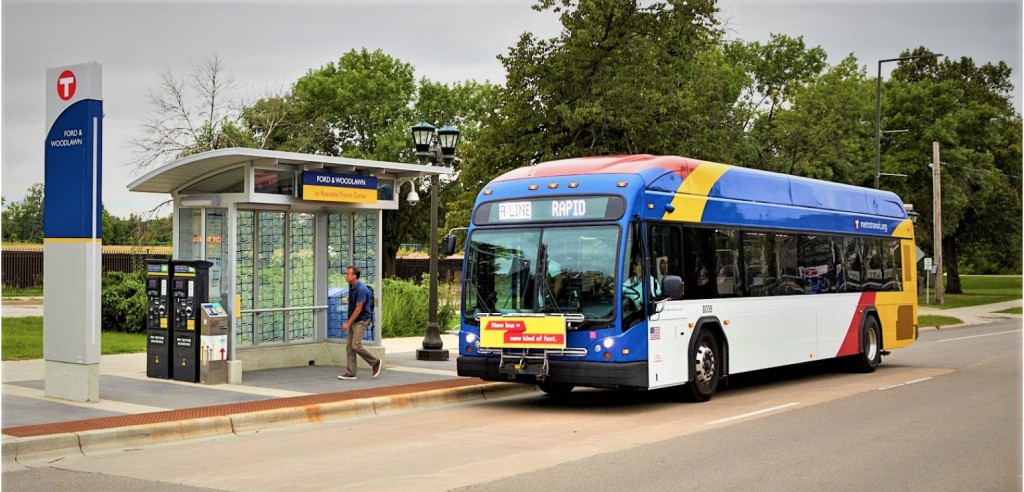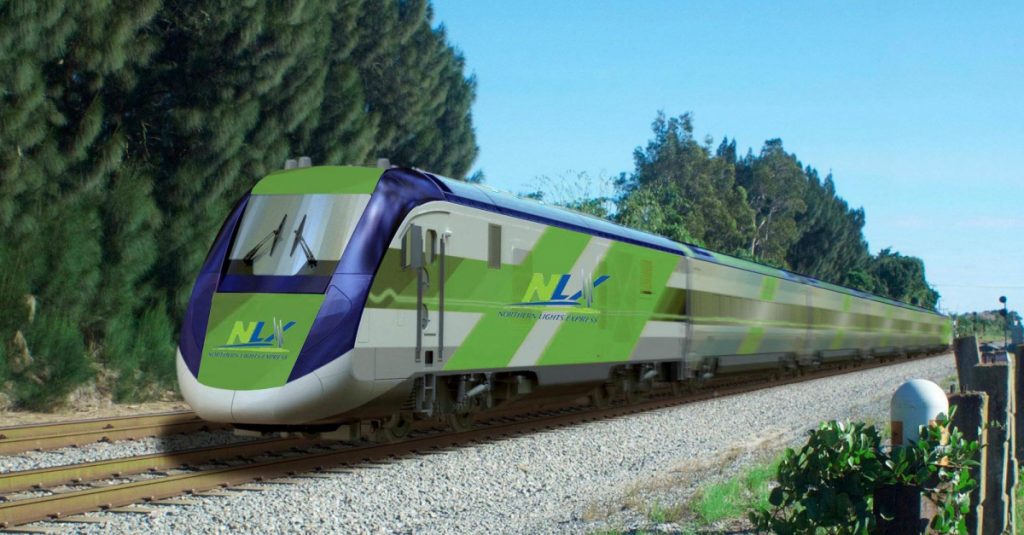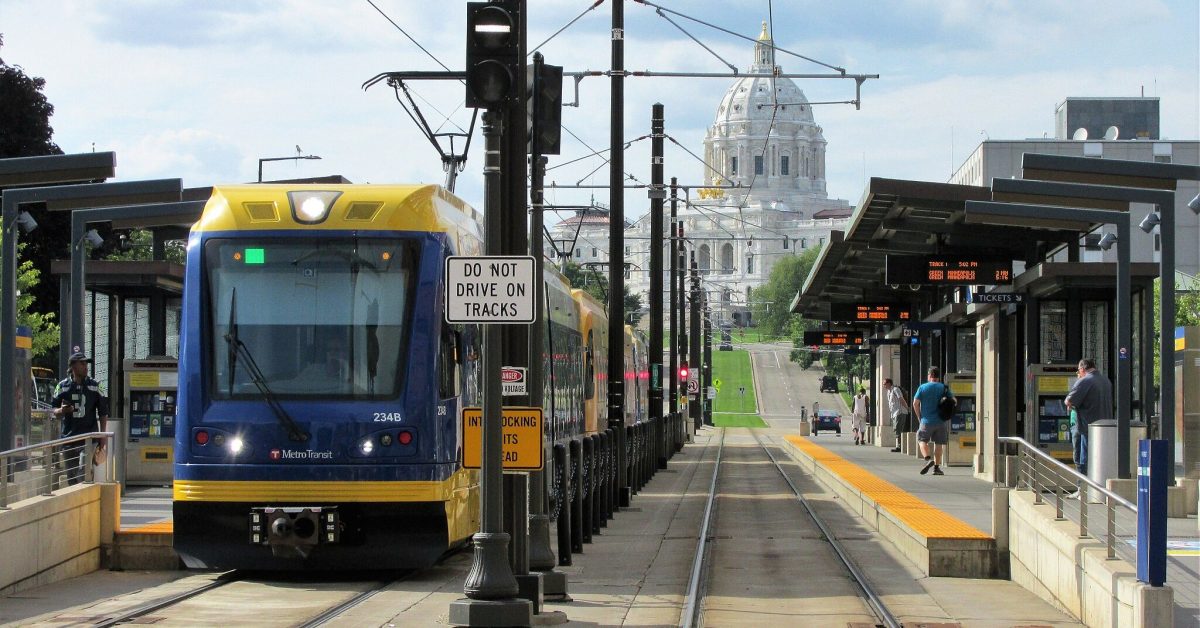Earlier this month, after an extended special session, the Minnesota Legislature at last agreed upon a transportation funding deal, since signed by Gov. Tim Walz, finalizing a state budget for the next biennium. However, a last-minute change to the transportation agreement resulted in far more substantial cuts to transit funding for most Minnesotans than was initially disclosed in a bipartisan agreement.
Transportation leaders from both parties met in closed-door working groups to negotiate the package amid challenging circumstances: federal funding uncertainty, inflation, rising construction costs and structural problems with the Trunk Highway Fund, which faces an $18 billion maintenance backlog due to Minnesota’s unnecessarily massive road network — the nation’s fourth largest by lane miles.
Minnesota’s oversized highway system is crushing our tax base. Meanwhile, national and statewide data indicate that 30% of adults in Minnesota and elsewhere can’t or don’t drive, and 10% of households have no cars. That makes it critically important for the transportation bill to invest in transportation differently, both to address escalating maintenance costs for our roads and provide safe and affordable mobility choices for all Minnesotans.

Beyond budgetary issues, political challenges also defined this session. Leaders — particularly those in the DFL, who understood these realities and tradeoffs — navigated a challenging session to reach the agreement. Uncertainty from the Trump Administration, several special elections, a tied house, an early-session Republican power grab leading to an erosion of state-level democracy and norms, and the politically motivated assassination of DFL Rep. Melissa Hortman and her husband, Mark, along with the shooting of DFL Sen. John Hoffman and his wife, Yvette, just days after the end of a special session all made this year particularly difficult at the Capitol.
Transportation policy wins from the 2023 bill came under attack from the House GOP this year, but the final bill protected those achievements and progress toward cleaner, more equitable transportation. Other policies not included in the final agreement laid the groundwork for future nation-leading reforms.
Highway Planning and Policy
In 2023, Minnesota passed a common-sense law requiring the Minnesota Department of Transportation (MnDOT) to offset the climate impacts of highway expansion and maintenance projects by reducing vehicle miles traveled through investments in transit or active transportation. The deal protected this important provision despite it coming under fire from highway interest groups and other stakeholders and will apply system-wide starting in 2027.

Efforts to reform the way highways and state roads are planned and built also took a big step forward this year, despite not ultimately being incorporated into the final budget agreement.
A measure to invest in a holistic transportation system led by Our Streets and the Bicycle Alliance of Minnesota passed in the Senate, clarifying the purpose of our state highways to include all transportation modes, enabling flexible funding to support transit and active transportation along state highways.
The measure would grant MnDOT the flexibility to implement better multi-modal projects with existing funding, preventing rework and years of delays while saving millions by coordinating projects simultaneously.
This principle was put into effect through coordination between MnDOT and the Metropolitan Council on updates to the Highway 47 and 65 corridors in the north metro, set to receive investment for roadwork and the F Line BRT project, which demonstrates that aligning funds leads to more efficient transportation investment.
Other notable initiatives included those passed in the Senate Omnibus bill updating MnDOT’s project development process for major highway projects and a smart reform to the cumbersome design variance process for state-aid roads in counties and cities, cutting unnecessary red tape.
The Senate position also gave MnDOT’s existing Policy Advisory Committees meaningful advisory powers and strengthened public engagement on major projects, like those for Interstate 94 and Highway 252, where MnDOT has struggled with community input and public trust. Though not in the final agreement, it signals that MnDOT must do a better job of listening to communities and partnering with local governments when planning major projects.
Transit Funding
Leaders in the DFL have prioritized a principle that those who use and rely on transit and active transportation infrastructure should not bear all of the cuts to transportation, even as the state budget outlook necessitated cuts.
Facing cuts to transit and active transportation spending from the state general fund (though smaller cuts than what the governor originally proposed), DFL conference committee leaders proposed a change to the 2023 regional sales tax that would make up some of the difference by supporting the buildout of a robust Bus Rapid Transit (BRT) system in the Twin Cities.
Under the 2023 law, the Metropolitan Council received 83% of new tax revenue while metro counties got 17% for transit, active transportation and complete streets projects. The 2025 agreement planned to reallocate half the county funding to the Metropolitan Council for BRT capital investments, providing roughly $50 million more annually for transit despite state cuts, while counties retain 8.5% for unrestricted transportation spending.

Due to county pushback and efforts by the GOP and several Democrats to undercut the deal, the agreement was broken and cuts disproportionately fell on our transit system.
Active Transportation
Even in the most contentious of sessions, we saw legislators in both parties working together to improve safe access to active transportation. One example of this comes from changes to the wildly popular E-bike rebate, which faced a challenging rollout last year due to a mad rush in a first-come, first-served system. Sen. Jim Abeler (R-Anoka) and Rep.Lucy Rehm (DFL-Chanhassen) worked hand-in-hand to ensure that the remaining program funds did the most good, with key changes including a signup period and a lottery system in place of “first come, first served.”
Although active transportation did see cuts, they were less steep than those proposed in earlier versions of the House bill. Efforts to modernize “jaywalking” language earned bipartisan support in the Senate, but such a measure was not included in a final bill. Currently, the language directs people who bike, walk and roll to cross at intersections that can often be unsafe and inaccessible.

The “Safe Routes to School” program was funded in the compromise transportation bill, but not in the bonding bill. While total active transportation funding was cut, the funding remains in the base allocation for the next two bienniums and will have a new baseline of over $8 million per year starting in 2028, well more than pre-2023 amounts.
Unfortunately, funding for the Advisory Council on Traffic Safety was also cut at a time when roadway fatalities are increasing.
Rail
The Legislature did agree to cut roughly half of the previous allocation for the Northern Lights Express train to Duluth. However, the remaining $70 million will ensure that planning and engineering work continues through the next several federal grant cycles and the end of the Trump Administration, which is generally opposed to rail expansion.

The final bill includes studying a BRT alternative for the Blue Line Extension, although the findings will likely affirm the decision to build light rail. Efforts to cut Blue Line anti-displacement funding and suspend the Northstar Commuter Rail were both defeated (although Metro Transit plans to spin down rail service on the corridor in favor of bus, even without a legislative mandate).
It’s not time to back down from these important projects but to study more statewide transit connectivity, like BRT to cities such as Rochester — a major draw because of Mayo Clinic and the ambitious Destination Medical Center initiative.
Electric Vehicles (EVs)
Initial proposals to significantly increase EV registration fees were reduced in favor of a fee based on vehicle sticker price and taxes on electricity purchased at public charging stations. However, the new fee will mean EVs could pay disproportionately higher registration fees than conventional vehicles. For example, a hybrid getting 45 MPG and driven 12,000 miles annually pays about $85 in Minnesota gas taxes, while EVs will pay significantly more than this amount in registration fees despite making up a fraction of the cars using our roadways and producing less pollution.
As more new vehicles transition away from fossil fuels, the state will need to find new revenue streams distinct from the gas tax, but has so far been unwilling to charge fees based on other metrics for traditional vehicles, such as vehicle miles traveled (VMT) and vehicle weight fees.
It’s a setback overall in the context of other national rollbacks on EV progress. More work remains to shape EV policy, and a new working group created this session will help launch that process.
Earmarks
The initial House bill inexplicably included over $40 million in earmarks for a Twin Cities interchange while significantly cutting active transportation and transit funding for Greater Minnesota. Unusually, GOP legislators championed these funding shifts away from rural areas, despite typical urban-rural political alignments.
Earmarks are often used as a way to bypass merit-based methods of selecting projects and distributing funds. As such, advocates must carefully watch to ensure projects can stand on their own merits.
Despite a challenging political climate and fiscal constraints, Minnesota’s 2025 transportation budget protected key climate, transit and active transportation wins in the 2023 budget. However, disproportionate cuts to transit set a troubling precedent. With an $18 billion highway maintenance backlog and nearly one-third of residents not driving, future sessions must prioritize the bold, systemic changes made possible by the groundwork laid this session.
We’re overbuilt on highways. Climate change is real. It’s time to think about and invest in transportation differently.
